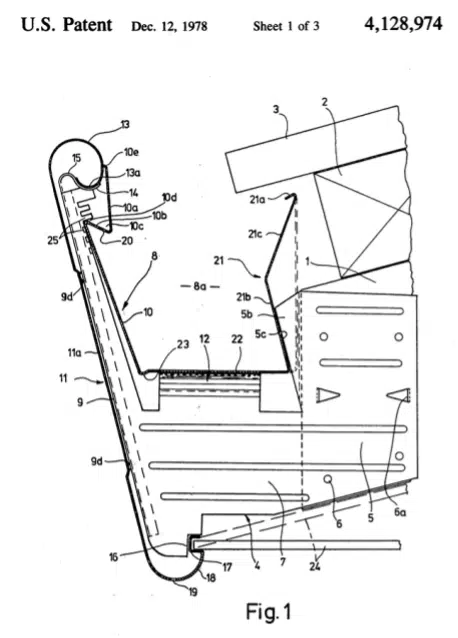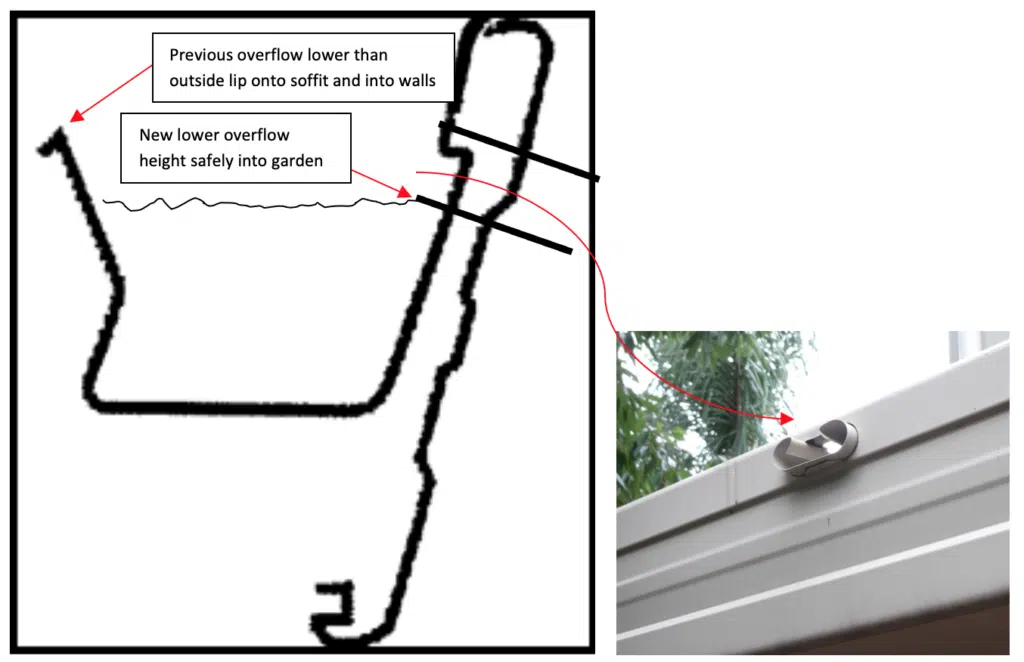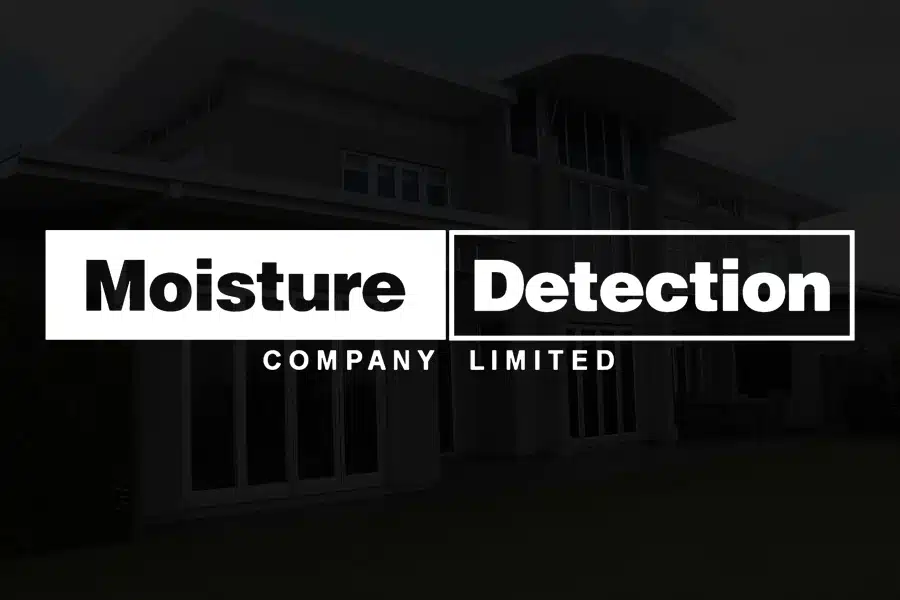Known in NZ as Taylor or Klass Fascia Gutter Systems
Gutter Overflows
Fascias-style guttering leak internally
Overflow Retro for Taylor Fascia Gutter
In 1978 Taylor invented a concept of concealed guttering and patented it. Its design was adopted in many countries including NZ. Despite the patent’s claims, its design is defective with an inherent overflowing issue making it unsuitable for New Zealand’s heavy down pours. The design claims rainwater will overflow safely at the base when the downpipes cannot cope, but it does not. Instead rainwater overflows onto the eaves where it spills across the soffits and into your house walls wetting the framing, insulation and GIB linings. Over time, that leads to decayed framing which, unfortunately, requires removal one day. It’s considered a risk when it comes time to sell your home.
Taylor has now removed this product from the market.

In most cases water overflowing into the walls is happening without your knowledge, as the wall framing is hidden behind the GIB and shows no visible signs of problems.
It can be tested for dampness with Mdu Probes if you are motivated to find out. More often than not, it’s left until the walls have been wet for so long that the carpet smells or your children are always snivelling and sick. If your home has any mould, condensation on windows, or general dampness and it’s hard to keep warm, maybe it’s time to test the walls to see whether the gutters need fixing.
What’s wrong with Taylor Fascia?
- The inside lip of the gutter is lower than the outside. So when the gutters get too full, the rainwater flows over the lower inside lip and onto the eaves and into the walls. Unlike traditional gutters that overflow safely onto the garden, these overflow into your home.
- When the gutters get obstructed with anti-leaf devices or leaves and debris build up, this dams up the flow rate and encourages more frequent overflowing into walls.
- Where the soffit is level, water overflows anywhere into the wall. (Note if your home has sloping eaves down to the gutter you can breathe a bit easier).
- The gutter width inside the metal casing is narrow in comparison to conventional gutters. The downpipes are generally undersize which restricts rainwater outflow rates causing more wet walls even in mild rain events.
- Many of these gutters are constructed directly onto walls without eaves so the overflowing rainwater has only one place to go – straight down into the walls.
- Mostly the gutters are installed with no fall, which restricts flow rates and promotes more regular overflowing.
- Many have been installed with an inadequate number of downpipes, so the rainwater cannot drain away affectively resulting in more overflows and wet walls.
- Some gutters systems feed storage tanks. Some houses are built below storm water systems. These are siphon systems whereby gutters retain a head of rainwater restricting gutter outflow rates, promoting overflows.
- Some, as the patent depicts, have holes pressed into them to actually promote leakage into the soffit before they reach capacity.
- Some are installed with overflows, but these are generally at the downpipe and disregard the long lengths of guttering where rainwater builds up and overflows occur.
So what’s the solution? It’s an overflow upgrade.
The Taylor and Klass overflow upgrade is a safe way to promote early overflow safely into the garden or onto paths – away from the soffits and walls of your house. You’ll be shocked to see the overflows operating when it rains heavy – previously much of that water was getting into your home.

New overflows fitted lower than the inside lip promoting safe overflow into the garden away for the house.
Contact us today for an informal discussion on your situation. We promise professional, friendly and ethical advice.
Phone: (09) 271-0522
Email: info@moisturedetection.co.nz.
